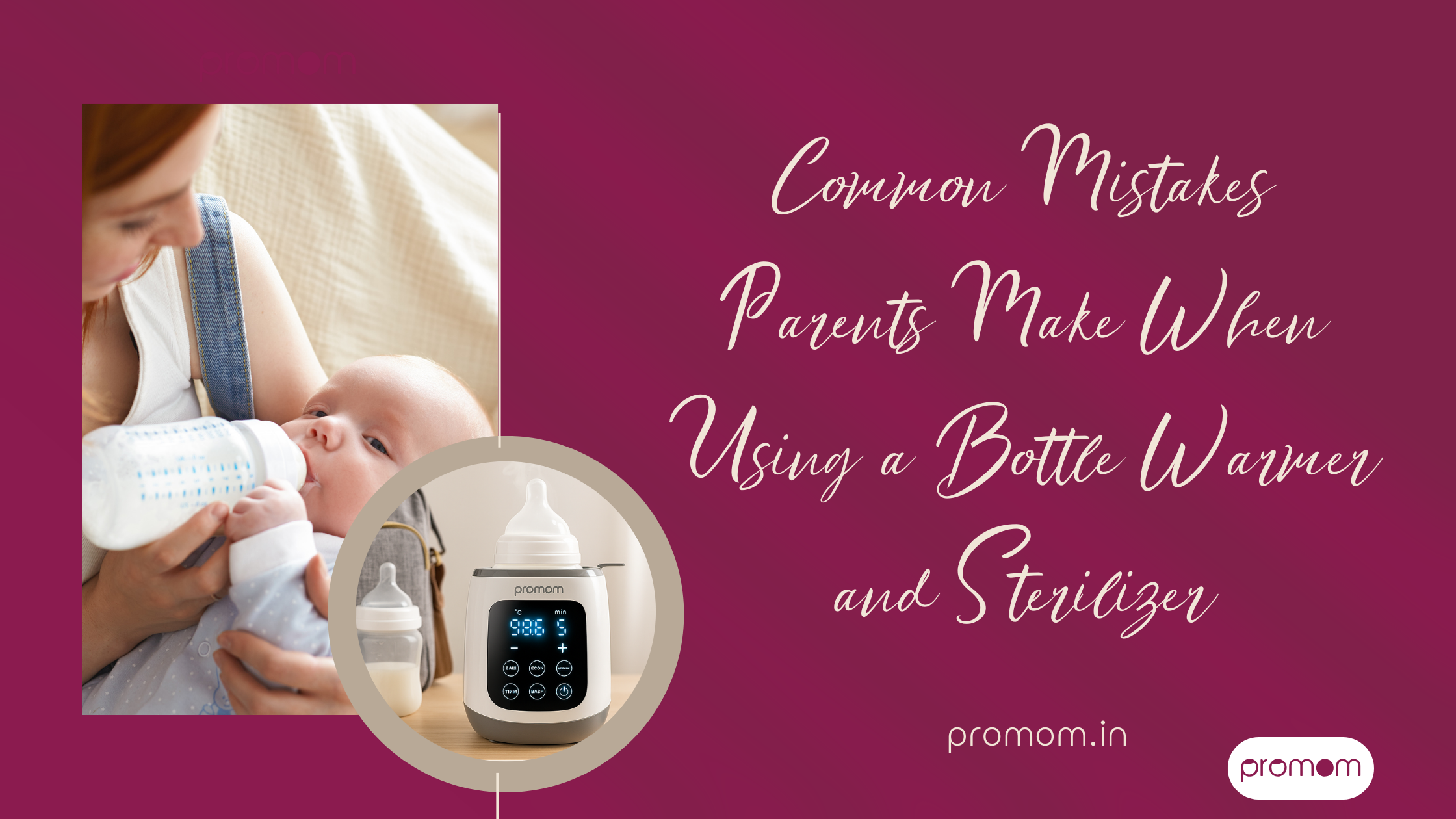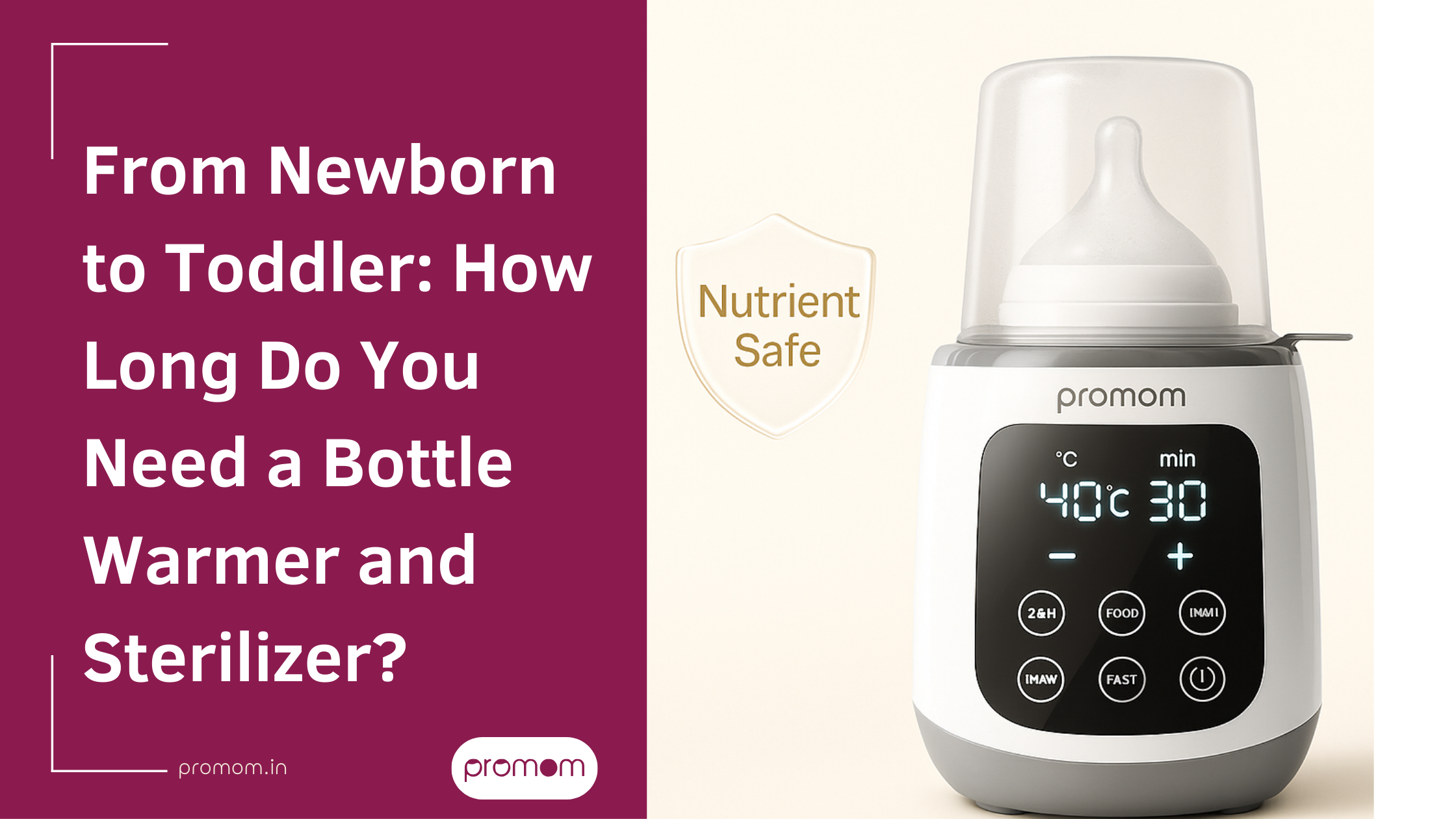
Maintaining A Breast Milk Pump | Promom.in
It is crucial for mothers to use a quality breast pump, especially female workers, who need to store breast milk for their babies. But that is only half the battle, the other half is maintaining the pump to ensure it is in proper working condition for the job it needs to do. Understanding how to maintain your breast pump properly will enable you to get the best results from it as well as to have it for the right amount of time that you require it for. Here are some tips for maintaining your breast milk pump by Promom!
Cleaning Properly After Every Use
It must therefore be important that all those areas of a breast milk pump that come into contact with milk are cleaned thoroughly so that both you and your baby are safe. Fluid that stays in the tubing, bottles, valves, membranes, etc. can sour and create bacteria and mold formation. It is recommended to disassemble all parts or accessories that come into contact with breast milk after each pumping session and clean them according to the instructions provided by the manufacturer.
Store Properly Between Uses
For pump parts and attachments, and the bottle or breast milk, it is important to store them in a clean and safe area from where the breastfeeding machine is used. In case this is possible, keep milk and equipment in a refrigerator or cooler with ice added to it. All parts should be packed in a clean bag or container to avoid contamination and mixture with other substances like the floor. Breast milk should be put in clean and properly sealed containers, labeled according to the date it was stored, and placed in the back of the refrigerator where temperatures are optimal. Do not place pump parts or milk on door shelves or in crisper drawers that are normally warmer or colder.
Clean Pump Exterior
Clean the outside part of the breast pump machine regularly with baby wipes that contain antibacterial solution or wash with water and a little amount of soap. Buttons and dials, which may often get dirty or develop a layer of dead skin cells and debris, should be of particular focus. Discontinue use of pump exterior until it is completely dry and/or store it in a dry location. If there is any vent then check it and if the fabric is dirty then use a small vacuum cleaner attachment for cleaning and removing the dust. Pump exterior cleanliness reduces germs and contributes to the extension of pumps’ lifespan.
Replace Parts Routinely
Another sign is if the part seems to have cracks, has a cloudy appearance, or if the plastic used in the part is not straight. Membranes, valves, and tubing should be changed every 3 to 6 months, or in proportion to the extent they are used. Wear of the older parts right down to the micro level can also interfere with the pumping effectiveness. In any case, it is always better and safer to have spare parts readily available in the event of need. Some pumps have additional accessories. Otherwise, orders from the manufacturer or a specialty distributor will have to be used. Be sure to look at model specifics when reordering so you receive the correct parts that fit the pump.
Use Proper Power Source
Here is the note when you use an electric pump - always make sure to plug it directly to a wall socket if you can, instead of plugging it into a power strip or an extension cord. As with any other duty, power supply is a crucial consideration where inconsistent power can have adverse effects on the pumping efficiency. If you are using a battery-powered pump, be sure to use new batteries or charged batteries if available.
Check Suction Strength
Suction strength is always less with time because of some basic reasons like the use of the pump for a long time and the efficiency of the pump parts also reduces. If spraying is less or irregular, it is likely that suction is compromised or slowly failing. Make sure it is not a power supply problem then decide that internal components need to be replaced. Document the daily ounce totals to look at the total sum, which would reveal the lowered performance.
Schedule Professional Servicing
It is important to consult the owner’s manual of your breast pump and verify if it is advisable that the manufacturer should service the breast pump after a specific period of use. The majority of the retailers have repair services that they provide to those with damaged products. Or seek for an appliance repair shop in your area that is used to handling breast pumps if none is listed. The routine maintenance can help regain the pump's efficiency and make the maximum number of usable years out of high quality pumps.
Use Carefully
Do not drop or knock over the pump as it will shift parts and affect the efficiency of milking functions. Carry only by base or handle when the device is not in use and has no power sources connected to it. Its handling should be done with care by using a padded case or bag rather than a flimsy tote. Never put a pump on its side or operate it with the operator leaning back as this results in water getting into internal tubes or motors. When using the pump, it should be positioned vertically on a hard flat surface at all times. If you take reasonable care, your pump should be able to perform better in spite of normal general usage.


